By Carl LoBue (The Nature Conservancy)
Paul Sieswerda (Gotham Whale), Howard Rosenbaum (Wildlife Conservation Society), Artie Kopelman (Coastal Research and Education Society of Long Island), Rob DiGiovanni (Atlantic Marine Conservation Society), and Danielle Brown (Rutgers University/Gotham Whale) contribute to the article.
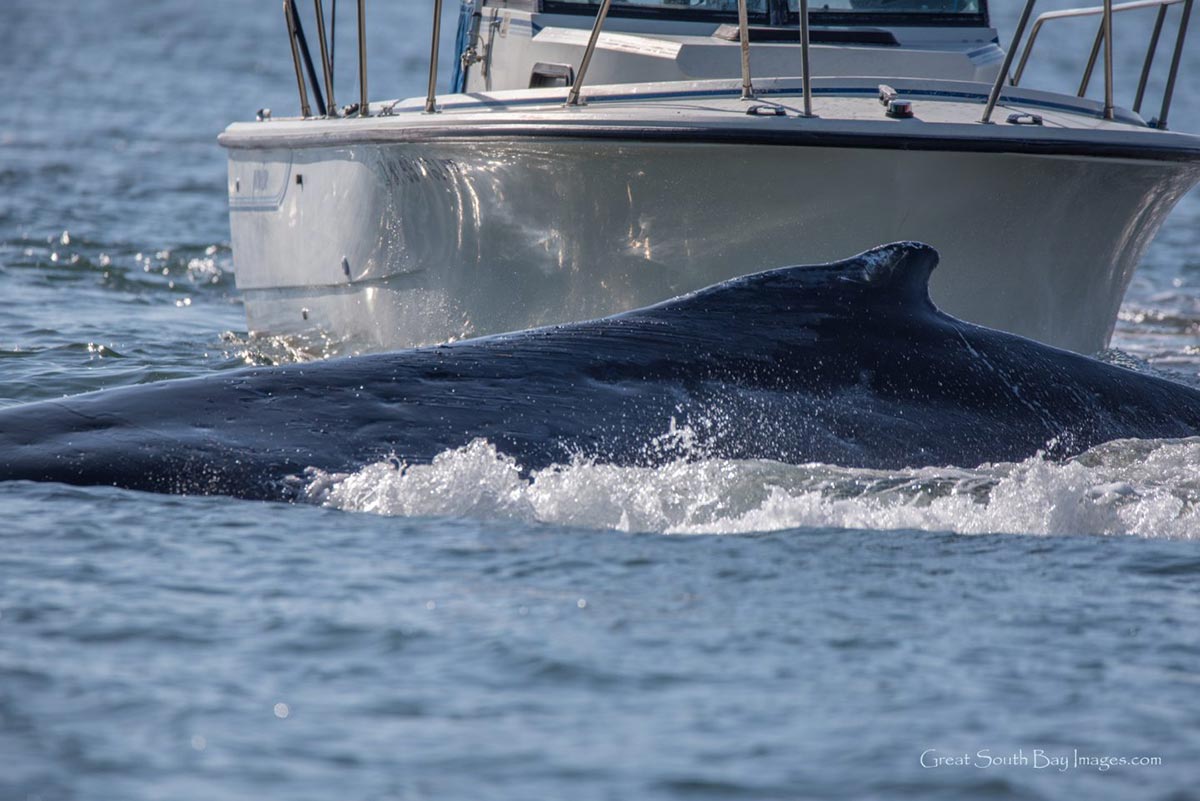
Some advice on safely navigating around the large number of whales and porpoises that have taken up residence in our offshore and nearshore waters.
If you regularly spend time on the water or even at the beach, then you already know that for the past few years whales, dolphins and seals have become a more common sight in our area. From the offshore tuna grounds right up to the surf and even in inlets, bays, harbors, and Long Island Sound – if you keep a sharp lookout and know what to look for, then you may have a good chance to see whales and/or dolphins at some point this season. And if you don’t keep a sharp lookout you may end up being involved in a collision that results in injury or death of a whale while also putting your vessel and crew at risk. Collisions involving recreational boats have already occurred in NY/NJ this season.
Whether chasing fish or just cruising with the family, no captain wants to run their boat into any large object, no less a whale. While speed is a factor in many boat collisions – slowing down isn’t the only thing you can or should do to avoid harmful interactions with marine mammals. Below are some important tips that will improve safety, and key you into observing marine wildlife that you might otherwise have missed such as sea turtles, ocean sunfish and sharks.
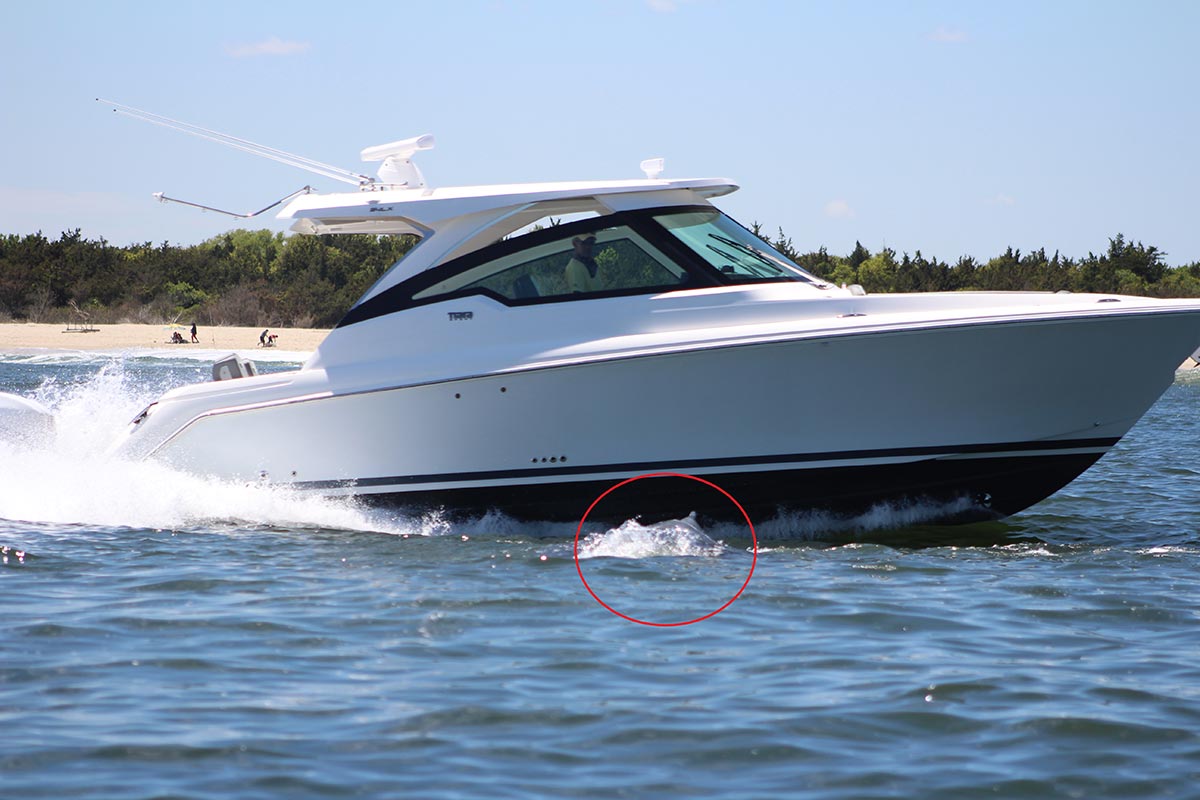
Be Alert
Unlike inanimate hazards, marine life moves and dives below the surface. So, in addition to keeping lookout directly in front of you, scan the horizon for spouts, splashes, and water disturbances. A fluke print (a flattened circle of water produced when a whale dives) that is 400 feet away could mean a whale is directly under you.
Be Courteous
It is never courteous (or safe) to blast past other boats at high speeds. All of us have experienced someone obliviously blasting through a school of fish that we were casting into. These days, it’s just as likely that if you see a cluster of boats that they might be watching a whale or some other marine wildlife – be courteous, slow down, and be alert to potential wildlife presence.
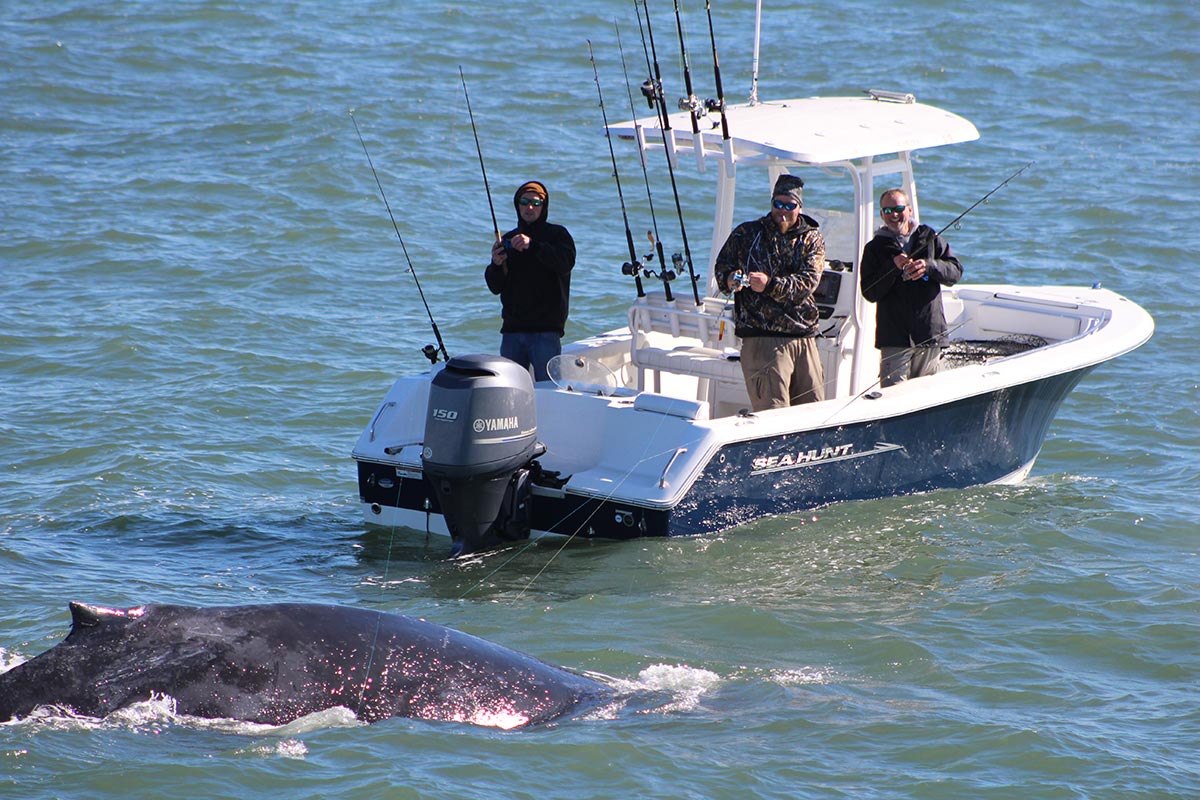
What To Look For
Scan from left to right, slowly, and then back again. Watching for anything that breaks the surface of the water.
Spout – At a distance spouts look like puffs of smoke on the horizon.
Fins and flukes – Anything larger than a bird that breaks the surface that is on the move is worthy of your attention, particularly if you’re fishing or there are swimmers in the area.
Agitated baitfish – When baitfish like bunker tightly school, rapidly change direction, or jump in mass – then something is chasing them. This could be the striped bass you were looking for, but it could also be dolphin, whales, or sharks – proceed cautiously.
Question floating debris – In some conditions a sea turtle will look like a floating boot, or a marlin may look like a stick, an ocean sunfish may look like a bobbing buoy. Steer clear of these things, or slow down and approach cautiously, you might see something really amazing, and you might avoid hitting a log.
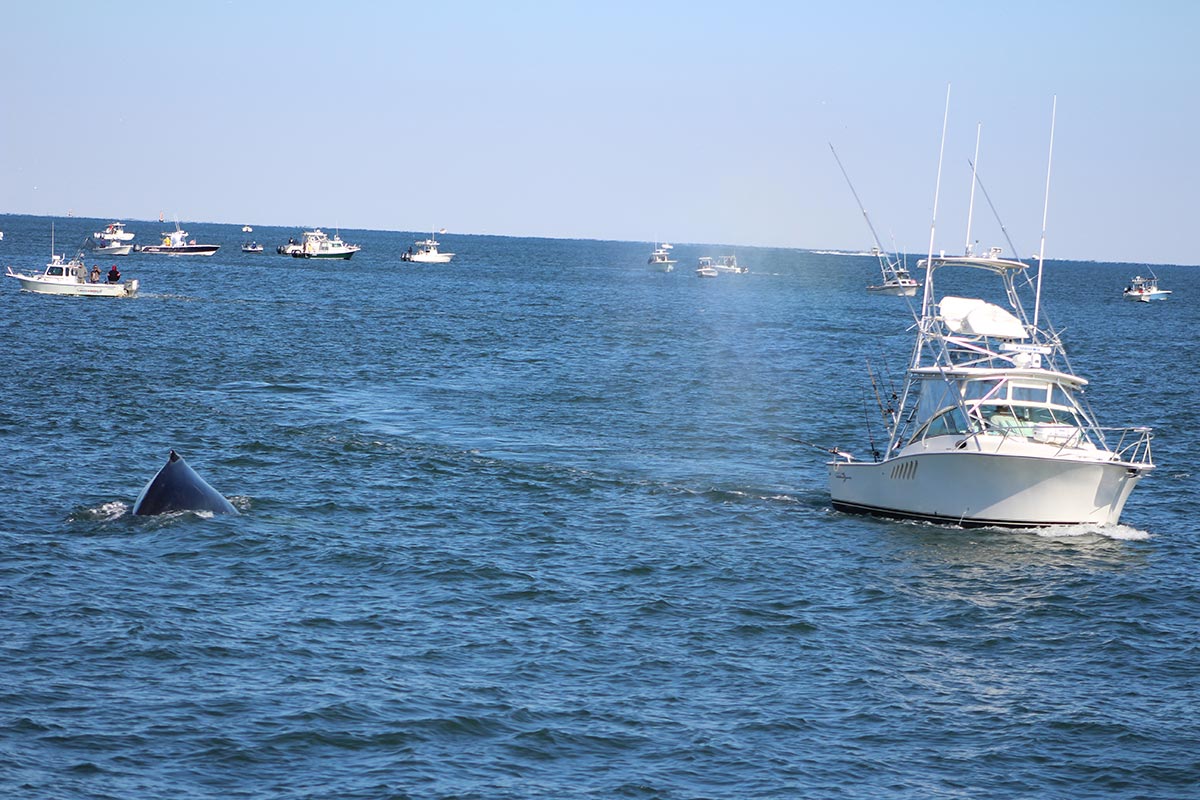
Expect The Unexpected
Almost every year for the past 5 years or so, one or more large whales have swum into Long Island’s bays or harbors. These animals are extremely vulnerable when they are in shallow, confined, high-traffic areas. They can easily get disoriented and even stranded on a falling tide. These situations can be made worse by boats following closely to take photos and too often these situations end tragically.
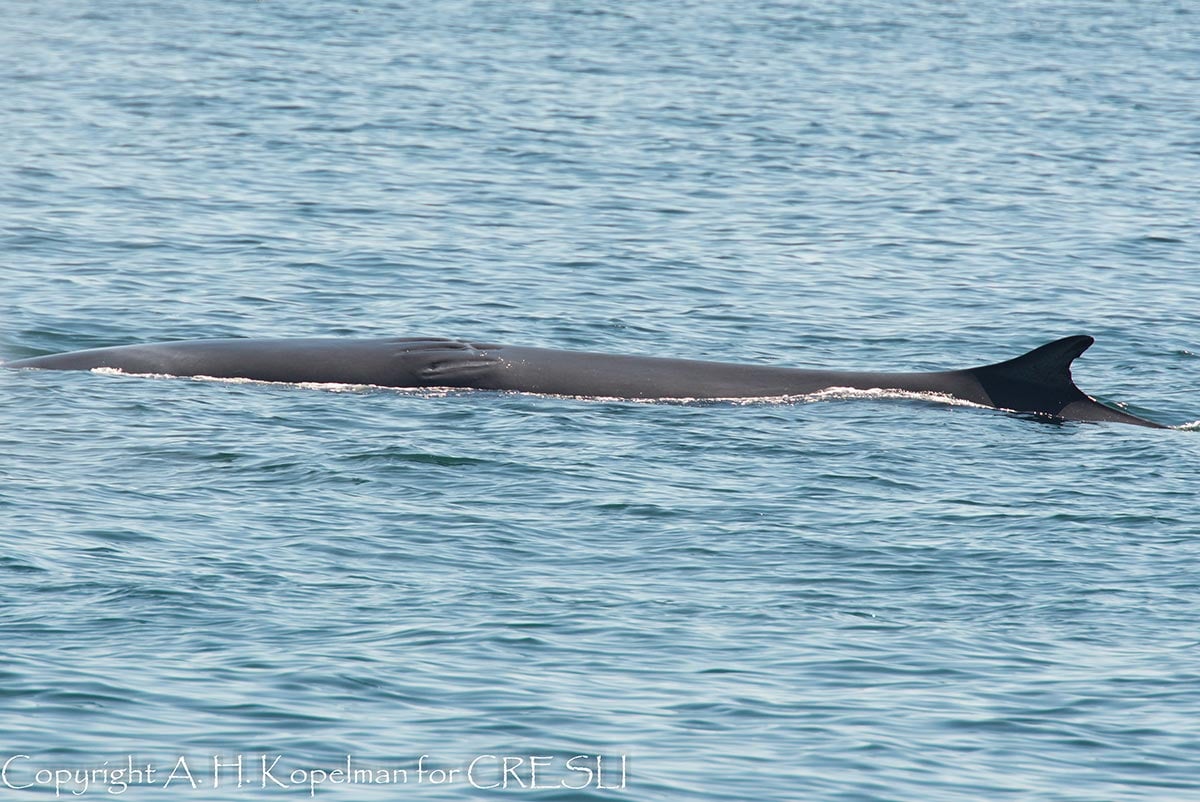
Keep Your Distance
Stay 500 yards away from the critically endangered North Atlantic right whale, 75 to 100 yards away from other whales, sea turtles, dolphins, and seals. Proceed slowly and cautiously, avoid quickly changing direction or getting in front of a moving animal. Never attempt to feed any wildlife – doing so puts them in danger. Watch the animals for any significant change in behavior – that’s your sign to slowly and safely move away. If you somehow end up with wildlife next to your vessel (they don’t always abide by the rules), take your engine out of gear until the whale, dolphin, seal, sea turtle, etc. has moved away. And when fishing, please take care to avoid hooking or entangling animals in fishing line.
Any marine mammal or sea turtle that appears entangled, distressed, dead or in a dangerous location (like an inlet or bay) should be reported as soon as possible to the NY Stranding Hotline at 631-369-9829, [email protected], the NJ Stranding Hotline 609-266-0538, the NMFS Stranding Hotline at 866-755-6622 or the Whale Center of New England 978-281-6351. These organizations share information and coordinate responses.
NOAA whale watching guidelines that apply to the entire northeast region:
https://stellwagen.noaa.gov/visit/whalewatching/guidelines.html
More info on marine mammals of NY:
Remember, while it’s the captain’s responsibility to keep everyone on board safe, the entire crew should be enlisted in looking out for marine wildlife – if your child is the first person to spot their first-ever whale or sea turtle, it will become a memory they never forget. In addition, fishermen and boaters can improve our understanding of where and when marine mammals occur by reporting sighting time, location and photos of non-distressed marine mammals to Gotham Whale’s WANTED program at: https://gothamwhale.org/citizen-science/.


